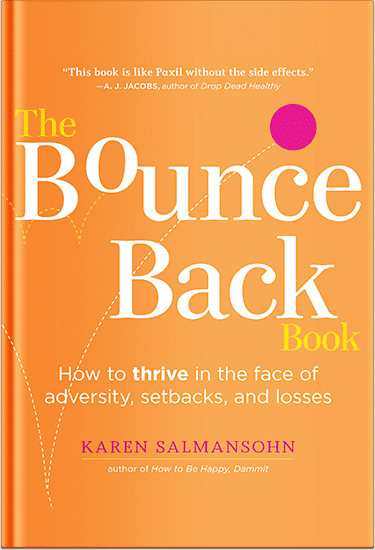 Wondering what are the best ways and exercises for teens to stay fit and healthy? One thing is for certain: teens need to work out. After all, they are a whirlwind of energy. One moment they’re glued to their phones, the next they’re bouncing off the walls.
Wondering what are the best ways and exercises for teens to stay fit and healthy? One thing is for certain: teens need to work out. After all, they are a whirlwind of energy. One moment they’re glued to their phones, the next they’re bouncing off the walls.
But with school, friends, and hobbies filling up their schedules, fitting in exercise can be a challenge.
However, exercise should be prioritized – because these formative years shape long-term health.
I am sharing about this topic not only because I’m a mom to a teen – but also because I am bestselling wellness author with about 2 million books sold globally.
Plus I founded the popular and therapist recommended self-paced online course called The Anxiety Cure.
In this blog, we will explore different types of exercises that are perfect for teens, considering their busy lives and the need for fun and variety.
9 Best Types of Exercises for Teens
1. Cardiovascular Exercises
For teenagers, cardiovascular exercises are a cornerstone of a healthy fitness routine. Activities such as running, swimming, and cycling are excellent for improving the heart’s efficiency and increasing lung capacity. These exercises help teens burn calories, which is absolutely essential during years when their metabolism is high. In addition, regular cardiovascular activity can help reduce stress and improve sleep, making it a great all-around option for busy teens who need to balance school, social life, and physical health. Engaging in these activities several times a week can set the foundation for a lifelong commitment to staying active.
2. Boxing
Boxing is more than just throwing punches; it’s a comprehensive workout that boosts cardiovascular health and sharpens mental agility. Teens stand to gain immensely from the discipline and physical conditioning that boxing offers. To truly experience the advantages of boxing training for teenagers, it’s crucial to train at a reputable facility. X3 Sports in Atlanta provides such a space where young athletes can immerse themselves in training that not only hones their technical boxing skills but also promotes self-esteem, discipline, and overall physical fitness in a supportive and safe environment. Visit https://x3sports.com for more information.
3. Strength Training
While many teens might shy away from strength training, fearing bulky muscles or heavy weights, this type of exercise is vital for overall health. Strength training isn’t just about lifting weights; it involves using body weight, free weights, or resistance bands to build muscle and strengthen bones. For adolescents, this is particularly important as it coincides with a period of rapid growth. Implementing strength training can help prevent injuries, support better posture, and enhance athletic performance. Exercises like squats, push-ups, and light dumbbell routines can be introduced early, ensuring that teens develop a healthy relationship with strength training. Starting strength training early also instills good exercise habits, setting teens up for a lifetime of fitness and well-being.
4. Team Sports
Team sports offer more than just physical benefits; they are a fantastic way to develop social skills, work on teamwork, and learn discipline. Participating in sports like soccer, basketball, and volleyball exposes teens to structured exercise that is also fun and engaging. These activities teach valuable life lessons such as cooperation, perseverance, and the importance of hard work. Moreover, team sports can be a source of lasting friendships and deep personal satisfaction, providing teens with a network of support and a sense of belonging that can positively impact their mental and emotional health.
5. Yoga and Flexibility
Yoga and flexibility exercises are excellent for teens, offering a gentle yet effective way to improve physical health. Yoga, in particular, helps in developing core strength, balance, and body awareness, which are beneficial for any physical activity. Moreover, the calming nature of yoga can provide a much-needed respite from the academic and social pressures that teens face. Incorporating practices like yoga into a teen’s routine can also promote better stress management and mental clarity.
6. Martial Arts
Martial arts training is another excellent option for teens, combining physical fitness with mental and emotional development. Practices such as karate, judo, or taekwondo focus on self-discipline, respect, and self-defense skills, which can boost confidence and self-esteem. These disciplines teach more than just fighting techniques; they cultivate patience, focus, and a respect for others that can extend into every aspect of life. Additionally, martial arts are inclusive of all fitness levels and can be adapted to suit the individual needs and capabilities of each teen, making it a versatile and empowering choice.
Additionally, martial arts are inclusive of all fitness levels and can be adapted to suit the individual needs and capabilities of each teen, making it a versatile and empowering choice. Whether they’re practicing striking techniques or grappling in Brazilian Jiu-Jitsu, wearing a high-quality BJJ Gi and rash guards can enhance performance and provide essential protection during training.
7. Dance
Dance is a dynamic way for teens to engage in physical activity that also encourages artistic expression. Styles ranging from ballet to hip-hop provide cardiovascular and muscle-toning benefits while also improving coordination and rhythm. Dance classes can be a less intimidating entry point for physical activity because they combine music, creativity, and movement in a fun, social environment. This makes dance particularly appealing to teens who might be reluctant to participate in more traditional sports or gym classes. Furthermore, dance promotes emotional expression and can be a powerful outlet for stress relief and self-discovery.
8. Hiking and Outdoor Activities
Encouraging teens to participate in hiking and other outdoor activities can connect them with nature while providing a solid workout. Activities like rock climbing, mountain biking, and kayaking introduce teens to unique adventures that also challenge their physical and mental boundaries. These activities often require teamwork and problem-solving, contributing to a teen’s personal development and self-reliance. Moreover, the exposure to different environments and the physical demands of navigating them can boost a teen’s endurance and adaptability.
9. Circuit Training
Circuit training is an excellent way for teens to keep their workout routines lively and engaging. This type of training involves a series of exercises performed one after the other, with minimal rest in between. Each circuit can combine elements of strength, cardio, and flexibility, making it a comprehensive workout that targets different areas of fitness. For teens, circuit training can be particularly beneficial because it breaks the monotony of repetitive workouts and keeps the energy high with quick, diverse activities.
Recap: Exercises That Are Best for Teens
All in all, finding the right exercise routine can be a fun adventure for teens. It’s not just about burning calories or building muscles; it’s about feeling good, boosting energy, and having a clear head. Mixing things up with a mix of cardio, strength training, and flexibility exercises is key. Remember, it’s about enjoying the process and finding what you love. So, grab a friend, put on some tunes, and get moving! Your body and mind will thank you.
Get Tools To Reduce Anxiety
Explore my bestselling and therapist recommended audio and video course: The Anxiety Cure.
P.S. Before you zip off to your next Internet pit stop, check out these 2 game changers below - that could dramatically upscale your life.
1. Check Out My Book On Enjoying A Well-Lived Life: It’s called "Your To Die For Life: How to Maximize Joy and Minimize Regret Before Your Time Runs Out." Think of it as your life’s manual to cranking up the volume on joy, meaning, and connection. Learn more here.
2. Life Review Therapy - What if you could get a clear picture of where you are versus where you want to be, and find out exactly why you’re not there yet? That’s what Life Review Therapy is all about.. If you’re serious about transforming your life, let’s talk. Learn more HERE.
Think happier. Think calmer.
Think about subscribing for free weekly tools here.
No SPAM, ever! Read the Privacy Policy for more information.
One last step!
Please go to your inbox and click the confirmation link we just emailed you so you can start to get your free weekly NotSalmon Happiness Tools! Plus, you’ll immediately receive a chunklette of Karen’s bestselling Bounce Back Book!


 Wondering what are the best ways and exercises for teens to stay fit and healthy? One thing is for certain: teens need to work out. After all, they are a whirlwind of energy. One moment they’re glued to their phones, the next they’re bouncing off the walls.
Wondering what are the best ways and exercises for teens to stay fit and healthy? One thing is for certain: teens need to work out. After all, they are a whirlwind of energy. One moment they’re glued to their phones, the next they’re bouncing off the walls.